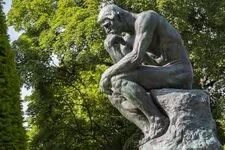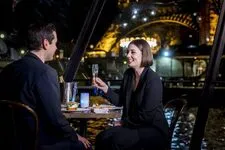Everything you need to know about the Rodin Museum

Since 1919, the Rodin Museum has been responsible for the preservation and promotion of the works of the father of modern sculpture who died two years earlier, Auguste Rodin. The artist's enormous collection is spread across two sites: the Biron Hotel, located on Rue de Varenne in the 7th arrondissement, and the Villa des Brillants, situated in Meudon in the Hauts-de-Seine. No fewer than 6,600 sculptures, 8,000 photographs, the same number of drawings, and 7,000 art objects are to be discovered. The Rodin Museum attracts 700,000 visitors each year, making it one of the most visited sites in the capital.
The Biron Hotel
At the intersection of Rue de Varenne and Boulevard des Invalides, the Biron Hotel is a private mansion built in 1727 by architect Jean Aubert, in the heart of a vast seven-hectare garden. It takes its name from Marshal Biron who bought it in 1853. The hotel has had a number of owners since its construction, as it successively fell into the hands of the Duchess of Maine (daughter-in-law of Louis XIV), the Papal Legation, and the Russian Embassy. Gradually falling into disuse, the place was then lent to a few artists who set up their studios there. Great names posed their brushes there, including Jean Cocteau, Henri Matisse, and of course, Auguste Rodin.
In the early 20th century, the former hotel was purchased by the State. Rodin then decided to donate his famous collections to it, but with one condition: that a museum entirely dedicated to his works be built within the walls of the former Biron Hotel. Unfortunately, Auguste Rodin passed away in 1917, so he did not have the chance to discover and participate in the inauguration of the museum, which opened its doors two years later.
The garden in which the hotel was built extends over three hectares entirely wooded and is remarkable for the monumental sculptures of Rodin that it houses. Located in the heart of Paris, it is a true cocoon of greenery where it is pleasant to stroll. Built when the hotel was inhabited by a religious congregation, the small 19th-century chapel was restored in 2005 and now houses a beautiful exhibition room as well as an auditorium, the museum's administration, and its ticket office.
Rodin the Collector
Auguste Rodin had an unbounded love for his personal collection of artworks. Throughout his life, he worked to expand it with drawings, paintings, ceramics, prints, photographs, and antique works. This unrestrained taste for artworks results in an impressive Rodin Museum due to the great diversity of works it presents. However, please note that for the proper conservation of the works, certain collections (particularly very old paintings and photographs) cannot be permanently displayed in the museum.
Many ancient objects remain visible throughout the year, objects that the artist accumulated over many years. A true enthusiast of ancient art, Rodin gathered superb pieces from all corners of the world: Italy, Greece, Egypt, and even Middle Eastern countries, the collected works testify to a surprising geographical eclecticism. The artist kept these works in his home and at his workplace: gradually, they invaded his studio.
Known as the founder of modern sculpture, Auguste Rodin also had a great passion for painting, which he also loved to collect. Great pictorial works are therefore now visible in the museum, such as the Nude Woman by Renoir or the Père Tanguy by Van Gogh.
Save time and book your tickets for the Rodin Museum.



